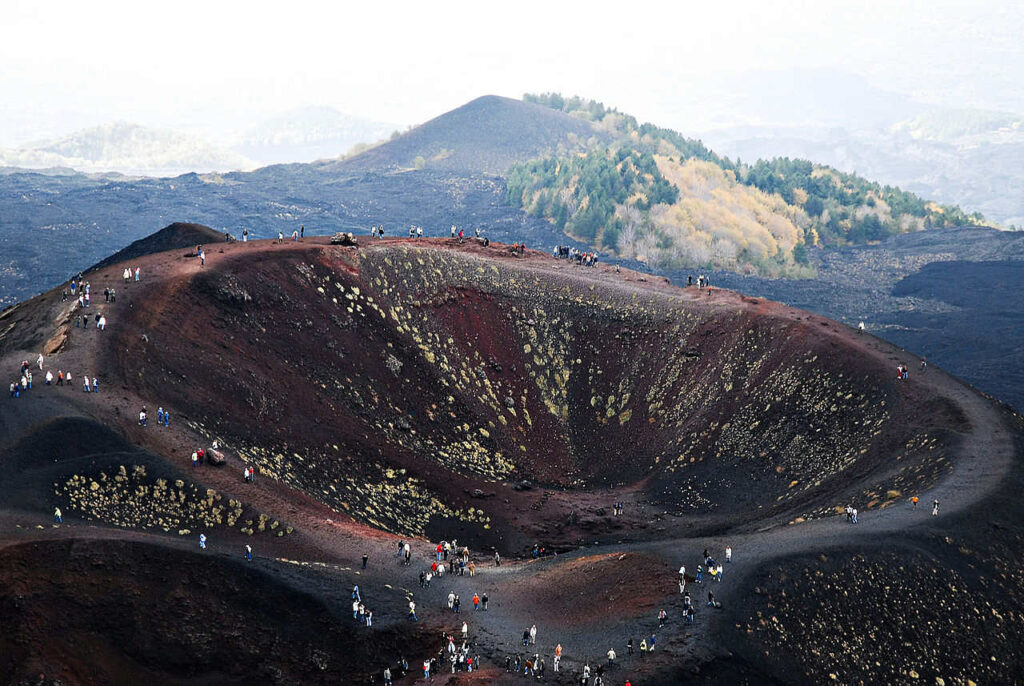
The southeast flank of Mount Etna in Sicily is sliding towards the sea at a rate of several centimeters a year. This might not sound like much, but the kind of stress that this movement creates inside volcanoes can cause devastating landslides. If, one day, Etna’s movement significantly increases then it could have serious consequences.
Read Also: Magnetism of Himalayas’ Rocks Reveals the Mountains’ Complex Tectonic History
With this in mind, scientists such as myself have been studying Etna to try to better understand what’s going on. Now research published in Science Advances presents strong evidence that Etna’s slide isn’t caused by pressure from magma inside the Mount Etna volcano, as previously thought. Instead, it’s likely caused by gravity pulling on Etna’s lower underwater slopes, far from the summit. The researchers emphasize that this means Etna is more susceptible to catastrophic collapse than had previously been realized, and that the same might be true of other coastal and island volcanoes.
My colleagues and I first calculated the speed of Etna’s movement earlier this year, showing that the entire edifice slid downslope at an average of 14 millimeters a year between 2001 and 2012. But the whole Mount Etna volcano is also expanding outwards from the summit in all directions, meaning its total annual movement towards the sea is several centimeters.
The new research looks for the first time at what is happening at the underwater foot of the volcano, 1,200 meters below sea level and 12 kilometers from the shoreline. Data from five underwater transponders gathered between April 2016 and July 2017, showed the underwater slope remained stable for a year but then slid four centimeters in one eight-day period before finally stabilizing again.
The data shows that the amount of movement is smallest at the summit and biggest at the foot of the volcano. But if movement was caused by the magma inside Etna then the biggest movement would occur near the volcanic center. The researchers also found that the sea floor movement 12 kilometers from the shore is focused along a single geological fault. But near the coast, the strain is divided between two fault systems.
This all suggests that the movement began offshore and spread towards the summit. There were no associated earthquakes during the eight-day episode, indicating that the movement wasn’t caused by seismic activity. Instead, it’s likely to be the effects of gravity pulling on the volcano.
For the past 50 years, the science of volcano movements has been dominated by the idea that most volcanoes have a shallow magma chamber that expands as it fills with magma before an eruption. This causes the walls of the chamber to eventually fracture and allows magma to escape from the side of the volcano. Measuring the volcano’s surface movement would allow you to calculate the depth of the magma chamber. It is this kind of model that is usually used to explain expanding volcanoes.
But many scientists including myself have found that while some well-studied volcanoes in Hawaii, Iceland and elsewhere fit this kind of model, other volcanoes contradict it. This suggests there are other factors that explain volcano movement and can affect eruptions.
In the 1990s, volcanologist Andrea Borgia suggested that the steadily increasing amount of lava and volcanic rock deposited near the top of tall volcanoes caused their summits to subside and their slopes to spread outwards. This idea has gained ground as volcanoes around the world provide us with more and more geological evidence, which the new research paper adds to.
Mount Etna has an uncertain future
So what does this mean for Etna? We can say with certainty that catastrophic collapse, in which an entire sector of a volcano slides off in a gigantic landslide, has occurred on the downslope side of other gravitationally sliding volcanoes. The devastation caused by such events, which occur worldwide about four times a century, means that the possibility has to be taken seriously.
Unfortunately, we don’t yet have enough detailed knowledge of the build-up to such events to make meaningful predictions about specific volcanoes. So while the authors of the latest paper argue that because Etna’s slide is caused by gravity it makes a collapse more likely, we still can’t give an indication of when or even if this will actually happen.
John Murray, Senior Research Fellow, School of Environment, Earth and Ecosystem Sciences, The Open University
This article is republished from The Conversation under a Creative Commons license. Read the original article.